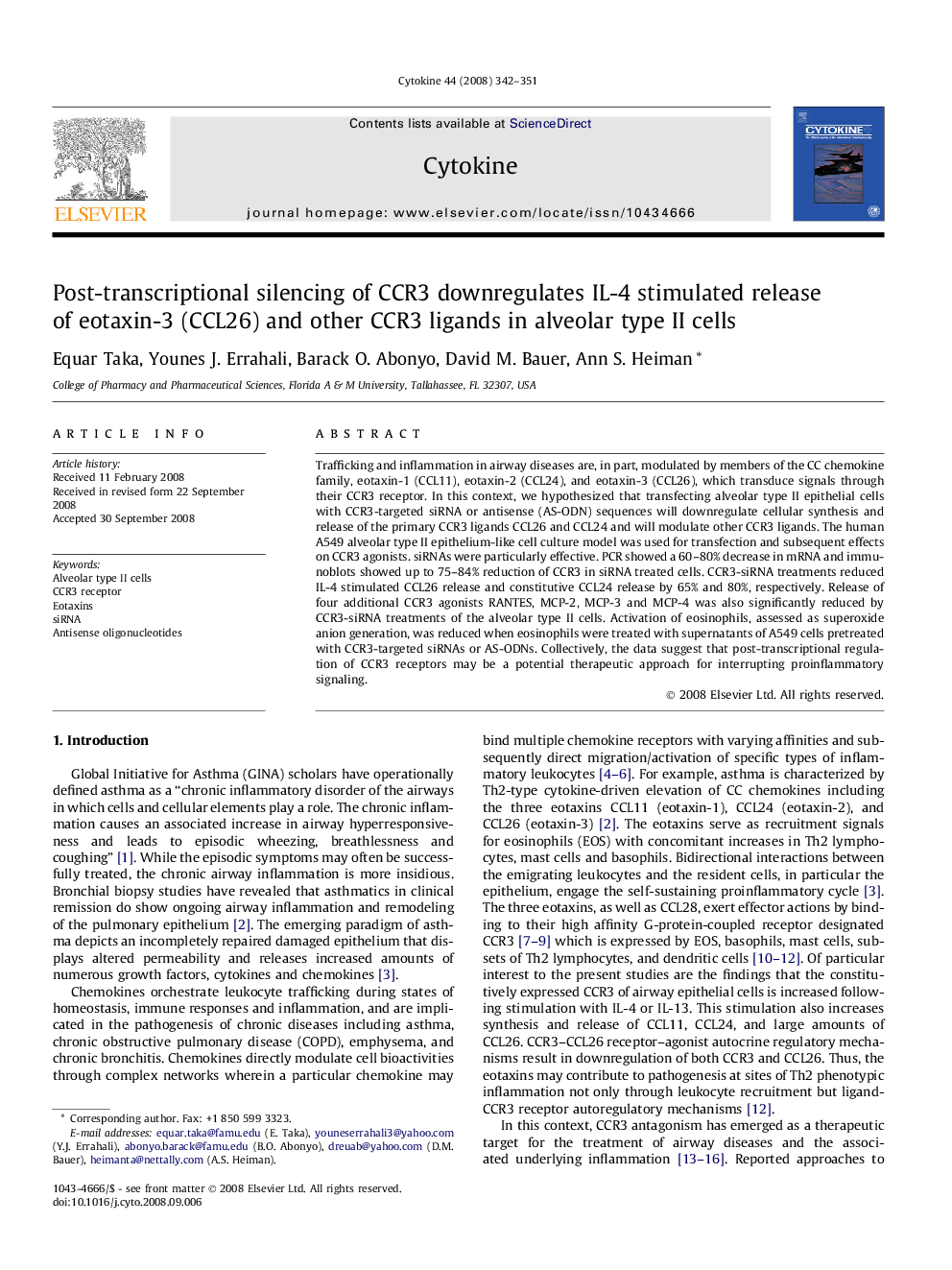| Article ID | Journal | Published Year | Pages | File Type |
|---|---|---|---|---|
| 2795647 | Cytokine | 2008 | 10 Pages |
Trafficking and inflammation in airway diseases are, in part, modulated by members of the CC chemokine family, eotaxin-1 (CCL11), eotaxin-2 (CCL24), and eotaxin-3 (CCL26), which transduce signals through their CCR3 receptor. In this context, we hypothesized that transfecting alveolar type II epithelial cells with CCR3-targeted siRNA or antisense (AS-ODN) sequences will downregulate cellular synthesis and release of the primary CCR3 ligands CCL26 and CCL24 and will modulate other CCR3 ligands. The human A549 alveolar type II epithelium-like cell culture model was used for transfection and subsequent effects on CCR3 agonists. siRNAs were particularly effective. PCR showed a 60–80% decrease in mRNA and immunoblots showed up to 75–84% reduction of CCR3 in siRNA treated cells. CCR3-siRNA treatments reduced IL-4 stimulated CCL26 release and constitutive CCL24 release by 65% and 80%, respectively. Release of four additional CCR3 agonists RANTES, MCP-2, MCP-3 and MCP-4 was also significantly reduced by CCR3-siRNA treatments of the alveolar type II cells. Activation of eosinophils, assessed as superoxide anion generation, was reduced when eosinophils were treated with supernatants of A549 cells pretreated with CCR3-targeted siRNAs or AS-ODNs. Collectively, the data suggest that post-transcriptional regulation of CCR3 receptors may be a potential therapeutic approach for interrupting proinflammatory signaling.
